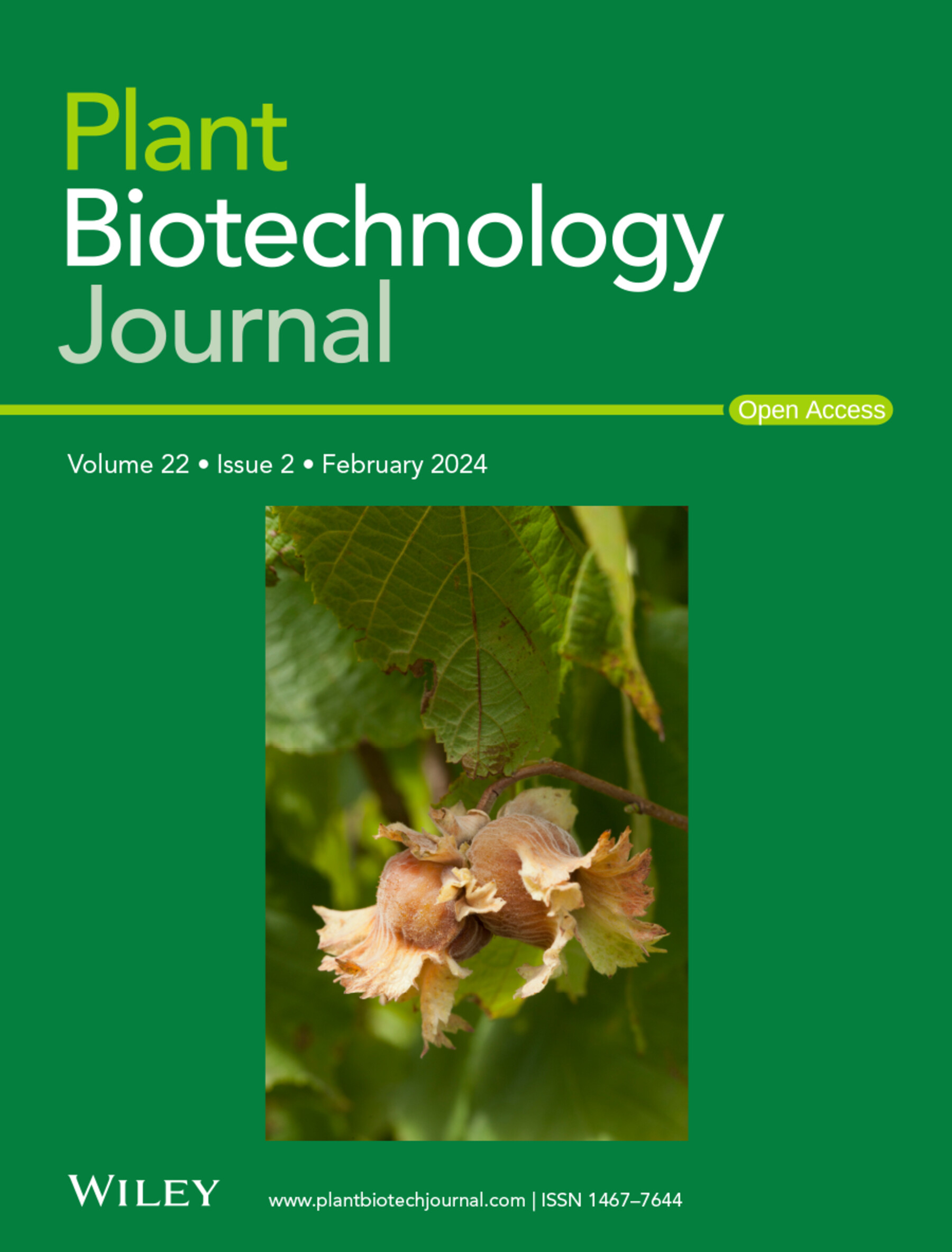A system genetics analysis uncovers the regulatory variants controlling drought response in wheat
IF 10.1
1区 生物学
Q1 BIOTECHNOLOGY & APPLIED MICROBIOLOGY
引用次数: 0
Abstract
Plants activate a variable response to drought stress by modulating transcription of key genes. However, our knowledge of genetic variations governing gene expression in response to drought stress remains limited in natural germplasm. Here, we performed a comprehensive analysis of the transcriptional variability of 200 wheat accessions in response to drought stress by using a systems genetics approach integrating pan-transcriptome, co-expression networks, transcriptome-wide association study (TWAS), and expression quantitative trait loci (eQTLs) mapping. We identified 1621 genes and eight co-expression modules significantly correlated with wheat drought tolerance. We also defined 620 664 and 654 798 independent eQTLs associated with the expression of 17 429 and 18 080 eGenes under normal and drought stress conditions. Focusing on dynamic regulatory variants, we further identified 572 eQTL hotspots and constructed transcription factors governed drought-responsive network by the XGBoost model. Subsequently, by combining with genome-wide association study (GWAS), we uncovered a 369-bp insertion variant in the TaKCS3 promoter containing multiple cis-regulatory elements recognized by eQTL hotspot-associated transcription factors that enhance its transcription. Further functional analysis indicated that elevating TaKCS3 expression affects cuticular wax composition to reduce water loss during drought stress, and thereby increase drought tolerance. This study sheds light on the genome-wide genetic variants that influence dynamic transcriptional changes during drought stress and provides a valuable resource for the mining of drought-tolerant genes in the future.求助全文
约1分钟内获得全文
求助全文
来源期刊

Plant Biotechnology Journal
生物-生物工程与应用微生物
CiteScore
20.50
自引率
2.90%
发文量
201
审稿时长
1 months
期刊介绍:
Plant Biotechnology Journal aspires to publish original research and insightful reviews of high impact, authored by prominent researchers in applied plant science. The journal places a special emphasis on molecular plant sciences and their practical applications through plant biotechnology. Our goal is to establish a platform for showcasing significant advances in the field, encompassing curiosity-driven studies with potential applications, strategic research in plant biotechnology, scientific analysis of crucial issues for the beneficial utilization of plant sciences, and assessments of the performance of plant biotechnology products in practical applications.
 求助内容:
求助内容: 应助结果提醒方式:
应助结果提醒方式:


